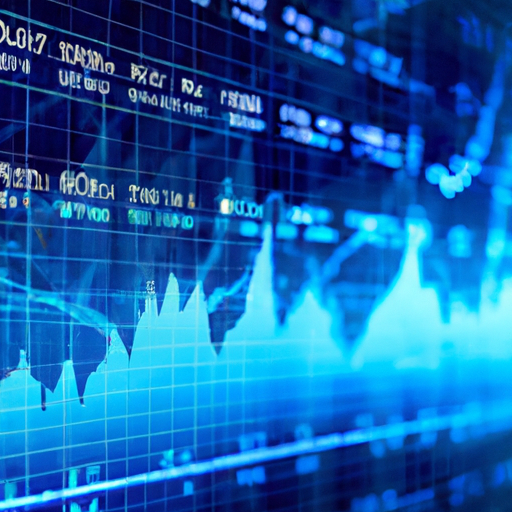Introduction To The Art Of Trading
The art of trading is a fascinating and intricate craft that blends analytical prowess with psychological resilience.
It’s not just about numbers, charts, and algorithms; it’s about developing a strategic mindset.
Whether you are delving into forex trading for beginners or fine-tuning advanced strategies, understanding the nuances of trading can set you on the path to success.
In this article, we’ll explore the key elements that make trading an art form, covering essential topics such as trading indicators, risk management, and high-frequency trading.
The Importance Of A Strategic Mindset
Creating a strategic mindset is crucial in mastering the art of trading.
You need to have clear goals, a well-thought-out plan, and the ability to adapt to changing conditions.
Take John, for instance, who started with forex trading without much understanding.
He invested impulsively based on tips from friends and ended up losing money.
However, after dedicating time to learning and developing a strategic approach—analyzing trends and using reliable trading indicators—John transformed his losses into substantial gains.
This story highlights why it is vital to go beyond superficial tactics and develop a deeper understanding of market dynamics.
Setting Clear Goals
Setting clear goals is your first step towards mastering the art of trading.
Do you want short-term profits or long-term growth?
Are you focusing on stocks or dabbling in forex trading?
Understanding your objectives will guide your every move.
For example, if you’re aiming for long-term success, you’ll likely focus more on comprehensive analysis rather than short-term fluctuations.
Developing A Plan
Creating a robust plan involves selecting appropriate trading indicators, learning risk management techniques, and deciding which markets suit you best.
A good plan will also outline how much capital you’re willing to invest—and lose—without jeopardizing your financial stability.
Consider Sarah’s experience: She designed her plan around pivot points and moving averages as her primary indicators.
This structured approach allowed her to make informed decisions rather than acting on whims or emotions.
The Role Of Trading Indicators
Trading indicators are like the brushes in an artist’s toolkit: they help paint a clearer picture of market trends.
Commonly used indicators include Moving Averages (MA), Relative Strength Index (RSI), and Bollinger Bands. Each serves unique purposes but can be combined for more comprehensive insights.
Moving Averages (MA)
_Moving Averages_ smooth out price data to identify trends over specific periods. They help traders understand whether an asset is trending upwards or downwards. For example, combining short-term (50-day) MAs with long-term (200-day) MAs can signal potential buy/sell opportunities when they cross each other—a phenomenon known as the “Golden Cross” or “Death Cross.”
Relative Strength Index (RSI)
The _Relative Strength Index_ measures the speed and change of price movements. RSI values range from 0 to 100; readings above 70 suggest overbought conditions while readings below 30 indicate oversold conditions. This helps traders decide whether it’s time to enter or exit a trade based on momentum rather than speculation.
Risk Management: The Unsung Hero
While it might not be as glamorous as predicting market trends or making high-stakes trades, risk management is essential in maintaining long-term success in trading.
Never forget that every decision carries inherent risks; managing these responsibly can mean the difference between growth and ruin.
Always use stop-loss orders to limit potential losses.
Diversify your portfolio across different assets to spread risk.
Regularly reassess your strategy based on performance analytics.
Consider automated systems like autotrading for precise execution without emotional interference.
Real-life example? Think back to famous traders like Paul Tudor Jones who swore by stringent risk management protocols even during their most profitable years.
Evolving With High-Frequency Trading And Autotrading
The landscape of modern trading has evolved dramatically thanks to technological advancements such as high-frequency trading (HFT) and autotrading systems.
These methods employ complex algorithms capable of executing thousands—if not millions—of trades per second based on pre-defined criteria.
Imagine navigating through busy traffic versus flying over it in a helicopter—that’s akin to what HFT offers compared with traditional manual approaches!
Similarly, autotrading enables hands-free operations aligned with your preset strategy parameters ensuring consistent application minus human errors/emotional biases!
The Impact Of Technology On Trading Strategies
Technology has democratized access making sophisticated tools available even for beginners!
Utilize platforms offering real-time data visualizations AI-driven predictive models
Integrate custom scripts/bots handling repetitive tasks improving efficiency
For instance: Alex started using an autotrader optimized via machine learning suddenly tripled returns automating routine trades freeing him focus broader macroeconomic analyses!
Incorporating these innovations elevates skillsets pushing boundaries redefining what possible within realms contemporary financial markets!
Conclusion: Balancing Art And Science In Trading
Mastering art takes persistent practice experimentation willingness learn adapt evolving circumstances just true professional discipline—notably so when pursuing mastery intricate world finance!
Balancing analytical rigor psychological acumen utilizing cutting-edge technologies hallmark successful strategy whether starting journey delving deeper already established foundation
Always remember: strategic mindset underpinned robust planning informed leveraging effective tools comprehensive risk mitigation pivotal aspiring becoming proficient trader
Finally embodying essence lifelong learner embracing continuous improvement integral thriving navigating dynamic ever-changing terrains successfully!
By immersing yourself creating distinctive blend art science, embarking transformative journey unlocking boundless potential flourishing within exhilarating domain global finance!

